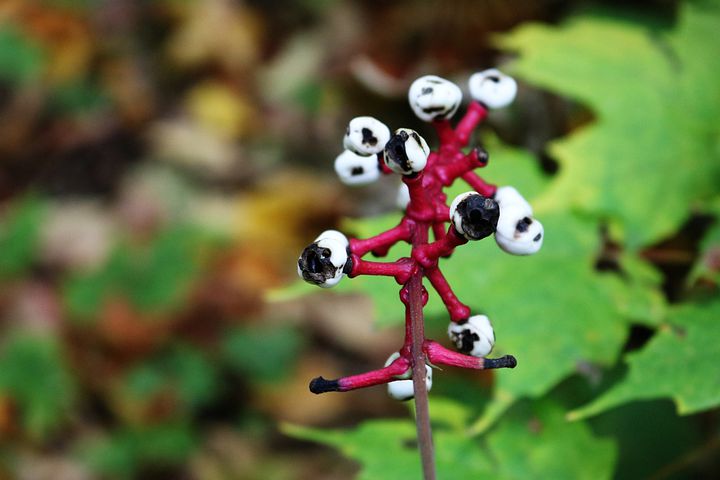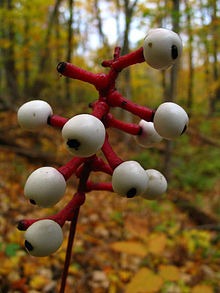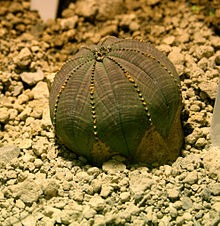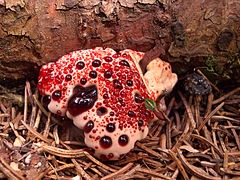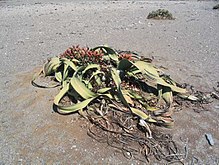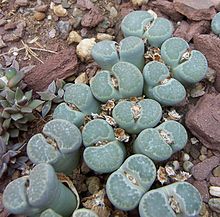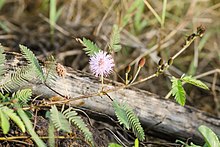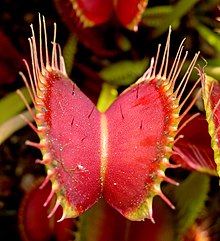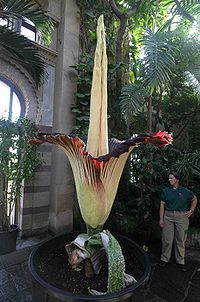There are around 298,000 plant species that we know of, and there must be thousands more that humans haven’t discovered yet. We all know about the common houseplants, fruit plants, and so on, but there are some very weird and strange species that we might not be aware of.
If you’re interested in anything to do with nature, you might find the following plants intriguing:
White Baneberry
Baneberry, also known as actaea pachypoda, is a plant that’s native to the North American forests. It’s a fruit-bearing species, but the fruits come out as little balls with dots in the middle. As a result, it looks like it’s growing tiny eyeballs. For this reason, it’s also sometimes called the doll’s eye plant.
A fully mature white baneberry plant will be 60 centimeters tall on average, with few leaves to hide the weird-looking fruit. While the thick, red stems look quite nice, the appearance of the fruit is enough to ward most people off. This is just as well, since those small 6mm balls are toxic and not to be consumed by humans or animals.
Baseball Plant
While baseball is usually considered to be an all-American sport, this plant is native to South Africa. Its official name is euphorbia obesa. Its weird trait is that the mature plant grows in a shape similar to that of a baseball.
That’s right, this is a pants that doesn’t branch out at all. It can reach around 20 cm in height, but the plant itself is very toxic. Even touching it might result in serious skin problems.
This particular species is also very rare. It’s protected by the laws of national nature conservation, so it’s unlikely that diehard baseball fans can get one for their homes.
Hydnellum Peckii
The name of this plant is strange enough, but its appearance is even stranger. Basically, this is more like fungi with juice-like fluids on its surface. Since the fluid is red, it looks like the plant is bleeding. Since the surface of this plant is whitish, the name ‘bleeding tooth fungus’ came about. However, some varieties of fluids on this plant could also be pink or orange.
This plant is mostly found in Europe and North America. While it’s technically safe to eat, the blood-like liquid is very bitter. There’s also a bad odor in Hydnellum peckii , so it’s probably best to avoid eating it if at all possible. In any case, its appearance might be termed as being among the strangest things on earth.
Welwitschia Mirabilis
This is quite a unique plant that’s only been documented in the Namibian desert. The lifespan of this plant alone is impressive; it can live to an estimated 500 to 1500 years. This is partly due to its ability to survive in extreme conditions, the kind that deserts are apt to experience.
What makes this plant really strange is that it only grows a total of two leaves in its life. These leaves could grow up to a massive 13 feet long, but they’re soon split into strap-like sections over time. The largest specimens of this plant are a maximum of 4.9 feet above the ground. However, the circumferences of its leaves could go up to and more than 26 feet.
Lithop
This plant is probably one of the strangest-looking succulents most people have even seen. In fact, it’s usually described as being a living stone, due to its stone-like or pebble-like appearance.
The shape of the lithop is caused by two separate leaves merging on the edge of the plant. The leaves for the lithop also grow when there are a lot of rains. These leaves are also mostly gray or brown, not green.
Interestingly, we can find lithops in several colors and shades such as gray, white, purple, and pink. While it’s mostly found in South Africa, there are ways to get this plant to other countries as well. After all, it’s a hardy species and expected to live for over 50 years.
Mimosa Pudica
The mimosa pudica is also called by the names ‘shy plant’ or ‘sensitive plant. It’s a native plant of South America, but can also be found in several other parts of the world. It prefers to grow in the shade, but what really sets it apart is how it responds to touch.
Basically, when someone touches this mimosa plant, its leaves fold up right away. This is due to the special nervous system inside the mimosa. The balanced water flow from under the leaves is disturbed very quickly, so it seems like the plant is shying away from our touch.
Venus Flytrap
Also called ‘dionaea muscipula’, the Venus flytrap is a strange plant in both appearance and habits. In fact, it’s surprisingly a carnivorous plant that eats insects, arachnids, and other living things. It mostly consumes anything that it can close its trap around, with the larger species even being known to eat small frogs.
We can find Venus flytraps in Eastern Carolina; its discovery is more likely when the vicinity is particularly wet. These plants close up their lobes as soon as any insect comes near them. Of course, the prey has to be one third of its trap’s size or even small in order to be caught by the plant. It might be interesting to see what the Venus flytrap does with some strange and unusual insects.
Corpse Flower
The corpse or carrion flower might have a disturbing name, but it’s quite attractive in appearance. The official name for this plant is ‘titan arum’, and it’s the largest unbranched inflorescence plant. It doesn’t have a single flower, but a compound flower that contains several small female and male flowers. These are then surrounded by what looks like a huge petal, but is actually the plant’s spath.
When the corpse flower plant is flowering, it activates a mechanism for heating the spaidx. This then enhances the smell of the flower in order to attract pollinators. This smell is very much like carrion or decaying meat, which then gave the flower its name. Another reason for the morbid name is that the odor attracts flesh flies and carrion-eating beetles.
However off-putting these flowers might be, they’re protected by the law due to their rare occurrence. Plus, this plant only blooms once in around 40 years.
Conclusion
Looking at all these weird unusual plants is hardly appetizing, but it’s still an enjoyable and interesting source of knowledge. If you liked hearing about these plants, these strange foods from around the world might be right up your alley.

